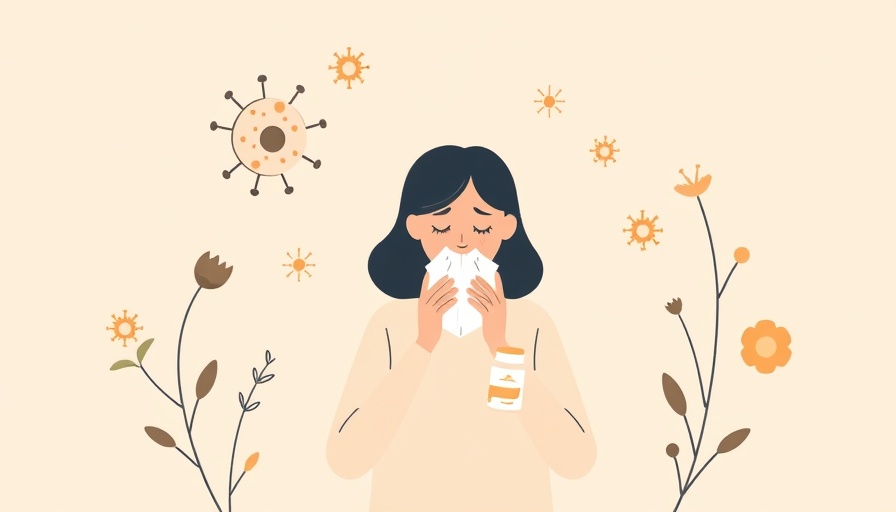
Understanding Austin's Allergy Landscape Throughout the Seasons
Austin is renowned for its vibrant culture and lively outdoor events, yet it also carries the title of "Allergy Capital of the World." Every season introduces a unique set of allergens that can challenge local residents and visitors alike. In this guide, we'll explore how to navigate the annual allergy cycle in Austin and provide effective strategies to manage symptoms, allowing you to enjoy all of what this vibrant city has to offer.
Spring: The Awakening of Pollen
As winter recedes, the first blush of spring brings a spectacle of blooming trees, but with it comes a deluge of pollen from oak trees, including the American elm and pecan. Oak pollen typically peaks around mid-March, creating a greenish-yellow dust on your vehicle. Dr. Neha Reshamwala from Frontier Allergy advises, "It's best to avoid outdoor workouts in the early morning when pollen counts are highest." Those with oak allergies should prepare for heightened symptoms, including sneezing and itchy eyes.
Summer: Grass Pollen Takes Center Stage
Once summer arrives, grassy allergens dominate the scene. Locals revel in outdoor festivals and concerts but may find themselves grappling with severe allergic reactions. According to Dr. Reshamwala, grass allergies are intense and can lead to hives, itchy eyes, and more. If you're sensitive, consider taking an antihistamine before mowing your lawn or engaging in outdoor activities to mitigate discomfort. Always shower and wash your clothes immediately after such activities to minimize allergic reactions.
Fall: Ragweed's Relentless Assault
Just as the leaves start to change, ragweed becomes a significant allergen from late summer through early autumn. The dense population of ragweed plants in and around Austin can release billions of pollen grains annually, leading to symptoms reminiscent of hay fever. While the end of summer may nudge you to open your windows and enjoy the breeze, Dr. Reshamwala warns against it, noting that keeping windows closed can significantly reduce indoor allergen levels.
Winter: Cedar Fever Strikes
The winter months bring about the notorious cedar pollen, commonly known as "cedar fever." This allergy can mimic flu symptoms, such as headaches and fatigue but lacks the characteristic fever. Dr. Reshamwala explains how the dry conditions effectively disperse cedar pollen throughout Austin, impacting many residents. The high volume of cedar trees surrounding the area exacerbates the situation, reminding Austinites to brace themselves for impending discomfort during the holiday season.
Strategies for Coping with Austin Allergies
Understanding the seasonal cycle of allergies is just the beginning. Here are practical steps and strategies to manage your symptoms:
- Monitoring Pollen Counts: Utilize accessible weather apps or online resources to track pollen levels daily. Plan your outdoor activities accordingly.
- Indoor Precautions: Keep windows closed, invest in high-quality air purifiers, and ensure regular cleaning to filter out unwanted allergens.
- Consult an Allergist: If your symptoms persist or worsen, consider consulting a specialist like Aspire Allergy & Sinus, where tailored allergy treatments, such as shots and drops, can alleviate your distress.
Embracing Austin with Eyes Wide Open
Austinites are no strangers to allergies, but understanding the allergens specific to each season is vital for maintaining your quality of life. With a proactive approach, you can find comfort during the allergy seasons without sacrificing the chance to enjoy everything Austin has to offer—whether it's outdoor concerts, local festivals, or scenic parks. Seize the opportunity to explore our vibrant city this season and connect with others while managing your allergies effectively. Don't let them keep you indoors. Take the first step towards alleviating your allergies today!
 Add Row
Add Row  Add
Add 




 Add Row
Add Row  Add
Add 

Write A Comment